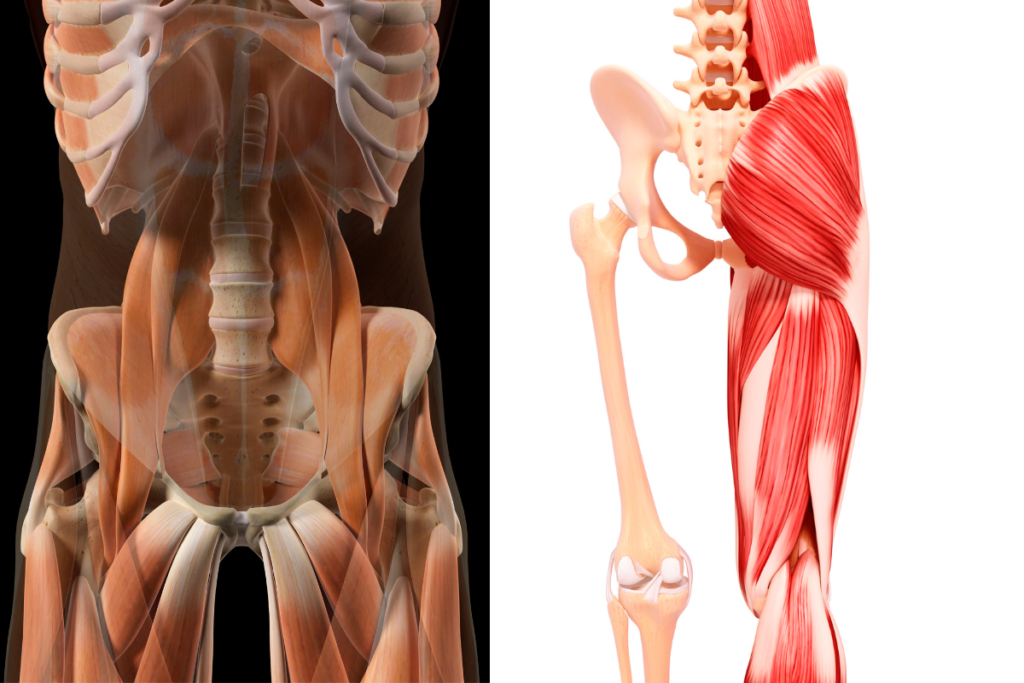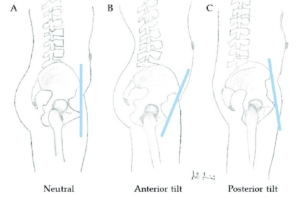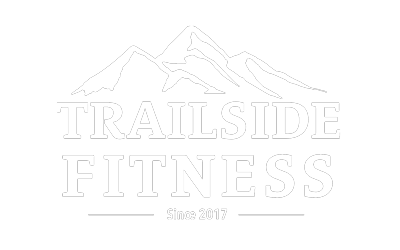Hip pain while hiking? Learn the causes and how to fix it!
Do you experience hip pain while hiking? In this post, you’ll learn the causes and how to fix it! The causes of hip pain in hikers can vary, but they generally fall into either a strength deficit or a missing range of motion at the ball and socket joint in the hip. Before we get too into the details, knowing some basic anatomy is essential.
I also created a video with more detail, which you can view here.
Note: If you are experiencing a deep ache in the hip joint, sharp pain, diffuse pain, or just plain discomfort, visit your medical provider for a proper diagnosis and treatment plan.
The Anatomy Of Hip Pain
Yearly hiker surveys tell us that roughly 18% of hikers deal with hip pain during hiking. The hips are complex. Many muscles attach to the hip bones, and dysfunction can happen in many ways. In fact, over 20 different muscles cross the hip joint. Muscle imbalances stemming from posture, work-related positions, and extended periods of sitting are most often to blame for hip pain.

Muscles Surrounding The Hip
These imbalances can result from muscle weakness or a lack of range of motion. Having imbalances and lack of motion can cause problems to other structures, such as the hip labrum or bursa. In addition, arthritis can also be a painful situation that impacts the joint surfaces.
Hip Muscles And Their Function
As you can see in the image, many muscles control and stabilize the hip joint. Here, we will cover some common muscle groups that might cause hip pain.
The abductors, or glutes, primarily move the leg away from the body and behind it. There are three glute muscles: the largest is the gluteus maximus, a smaller gluteus medius, and an even smaller and much deeper gluteus minimus. All of these muscles work to extend the hip (swing your leg behind you) and control rotation and stability for the ball-and-socket joint. The glutes’ job is to rotate your leg at the ball and socket joint and swing your leg behind as you walk.
Opposite the hip extensors and abductors are the hip flexors and adductors. The primary hip flexors are the quad muscles across the front of the body, which bring your leg forward as you walk and extend the knee joint. Opposite the quads, the hamstrings bend the knee joint and can help with hip extension or bringing the leg behind you as you walk.
Why Problems Occur
Several factors can impact the hip or pelvic position. Overpronation at the foot, for example, can cause excess rotation at the hip. This excess rotation can place stress on structures like the IT band, leading to discomfort or pain. In addition, if the foot collapses, it can lead to the hips rotating forward, which is called an anterior pelvic tilt. Tight hip flexor muscles, like the quads or tensor fascia latae, can tilt hips forward.
Think of your hips as a bowl of water. If the muscles on the front are tight, the bowl tilts forward, spilling water out the front. If the hips rotate too far back, you lose water out the back. The extremes here are not ideal. You want to be in the middle, not spilling water one way or another. A neutral pelvis position helps keep any imbalances at bay and generally causes fewer lower back problems.

Pelvis Position
When the hips roll forward, the arch in your lower back increases. This forward position also shortens one of the deeper hip muscles, the Iliopsoas, and a muscle on the front of the hip, the tensor fascia latae. The tensor fascia latae muscle, or TFL, ties directly into the IT band. When muscles are shortened, they can inhibit other muscles from working properly, such as the glutes.
What Does This Mean For Hikers?
The glutes are vital for the hip. They help support the lower back, stabilize the hip and hip joint, rotate the femur in the hip joint, and move your leg behind you. If the glutes aren’t doing their job, the hamstrings are the next best group to help. While the hamstrings can help swing your leg behind you, they don’t offer hip stability or rotation.
With regular walking or hiking, your glutes rotate the ball-and-socket joint as the leg moves behind you. However, when the hamstrings take over, the femur head doesn’t rotate as it should. Instead, the femur head is ever so slightly pushed forward in the joint, which can cause a pinching feeling in the front of your hip.
Strength & Stretching For Hip Pain
Correcting strength imbalances will be central to correcting hip pain. Alongside mobility to restore any missing range of motion at the hip joint, consider foot strength and footwear support. Here are some strength exercises and stretches for hip pain to cycle into your routine. With any exercise, it takes time for strength to develop; it may take weeks to start seeing results so stay consistent be patient.
I also wrote an article for Backpacker Magazine about this topic. You can read that article here.
Core Strength For Hip Pain
- Planks
- Hollow rocks
- Kettlebell swings
- Russian twists
- Farmer carries
- Sled pushes
Hip Strength For Hip Pain
- Step-ups – front, side, and cross-over
- Hip thrusters
- Bridges
- Squats
- Romanian deadlifts
- Lunges
Many of these exercises and additional resources are on my YouTube channel.
Hip Stretches For Hikers
Other Considerations For Hip Pain In Hikers
A proper pack fit is critical
If your hip belt is not at the correct height or is overtightened, it can also lead to hip pain. Overloading a pack can create fit issues and additional stress on the hips, which should carry roughly 75-80% of the pack weight. Make sure to buy the right size pack and watch the manufacturer’s videos to find a proper fit. Some backpack companies also offer replacement hip belts, which is nice if you lose excess weight while hiking.
Training Program To Fix Your Hip Pain
A personalized training program designed for you is one of the best approaches to correcting hip pain. Let’s connect if you’d to learn more about how a custom training program to help you prepare for your next hiking adventure. I’d be happy to help. Email me at lee@trailsidefitness.com with the subject “Hip Pain” to learn more.
Updated 5/16/24


Recent Comments